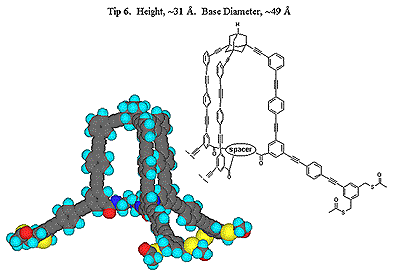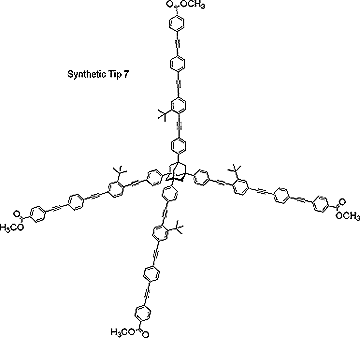Ordered by weight (if set) and creation date.
Research
Principal Research Interests: The central theme of John Keana's research program is the design, synthesis, characterization, and collaborative application of novel molecules. Target molecules are chosen for their relevance to the solution of important problems in biochemistry, molecular biology, neuroscience, or medicine and may be either organic, organometallic, or essentially inorganic in nature. The research program is markedly strengthened by frequent collaboration with research groups in the Institute of Molecular Biology and the Department of Physics at the University of Oregon and research groups at Parke-Davis, CoCensys, Inc. (now Purdue Pharmaceuticals), Cytovia, Inc. (a subsidiary of Maxim Pharmaceuticals) and SUNY Brooklyn. The projects below illustrate synthetic objectives typical of this laboratory. Project 1. Atomic force microscopy (AFM) is a relatively recent and rapidly expanding atomic level analytical technique that directly images three-dimensional surfaces of non-conducting substrates. AFM images are formed by reconstructing the contour of force interactions exerted between the scanning tip and the surface. Although not precisely defined, the resolution of AFM is limited by the large tip size relative to the dimensional parameters of individual substrate molecules. Our AFM project involves the design, synthesis, and collaborative application of tower-shaped molecules that have a broad base and that taper to a single atom or functional group. We envisage attachment of these molecules to a conventional AFM tip by way of three-point attachment at the base. Molecular dimensions are such that only one molecule is expected to be oriented suitably for imaging the sample by the tapered end of the tower (see schematic diagram below).



Project 2. The phosphatidylinositol-specific phospholipase C (PI PLC) enzymes occupy a central role in cellular function, for example, the release of proteins anchored to the cell surface or amplification of cellular signals such as the binding of a hormone molecule on the cell surface. Progress in the study of the bacterial and the mammalian enzymes has been hampered by the lack of convenient, sensitive means of measuring enzymatic activity. An objective in this laboratory is the design and synthesis of novel substrates and inhibitors for these enzymes. Biochemical and biophysical studies using these new molecules are being done in collaboration with Professor O. Hayes Griffith.

Project 3. A major focus has been the discovery of neuroprotective drugs and the characterization of their receptors. Neuroprotective agents can reduce stroke and other ischemic brain damage when administered hours after the event. Drugs resulting from collaborative research include Aptiganel (1) (phase III trials) and Licostinel (2) (phase I trials). Recent emphasis has been on the discovery of subtype selective NMDA receptor antagonists, for example, piperidine 3. These drugs show promise as agents for the treatment of Parkinson's disease. NMDA receptors may also be involved in pain perception in the spinal cord. This medicinal chemistry project is now essentially complete except for the preparation and submission of several manuscripts. Recent emphasis has been
on the design and synthesis of tumor selective anticancer drugs with a novel
mechanism of activation.

| Attachment | Size |
|---|---|
| keanafig1.gif | 13.33 KB |
| keanafig2.gif | 13.23 KB |
| keanafig3.gif | 6.6 KB |
| keanafig4.gif | 2.27 KB |
| keanafig5.gif | 5.21 KB |
